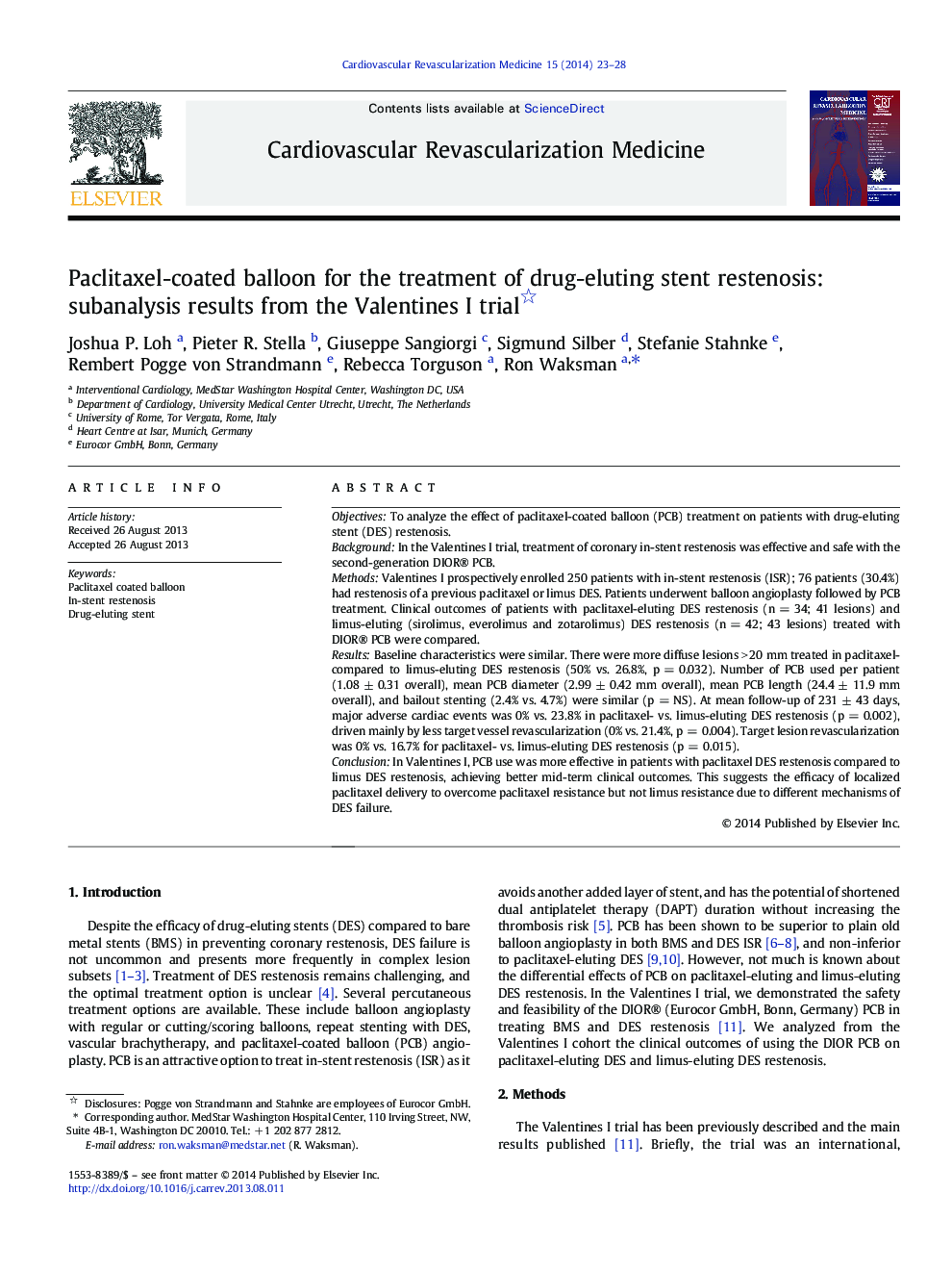| Article ID | Journal | Published Year | Pages | File Type |
|---|---|---|---|---|
| 2836965 | Cardiovascular Revascularization Medicine | 2014 | 6 Pages |
ObjectivesTo analyze the effect of paclitaxel-coated balloon (PCB) treatment on patients with drug-eluting stent (DES) restenosis.BackgroundIn the Valentines I trial, treatment of coronary in-stent restenosis was effective and safe with the second-generation DIOR® PCB.MethodsValentines I prospectively enrolled 250 patients with in-stent restenosis (ISR); 76 patients (30.4%) had restenosis of a previous paclitaxel or limus DES. Patients underwent balloon angioplasty followed by PCB treatment. Clinical outcomes of patients with paclitaxel-eluting DES restenosis (n = 34; 41 lesions) and limus-eluting (sirolimus, everolimus and zotarolimus) DES restenosis (n = 42; 43 lesions) treated with DIOR® PCB were compared.ResultsBaseline characteristics were similar. There were more diffuse lesions > 20 mm treated in paclitaxel- compared to limus-eluting DES restenosis (50% vs. 26.8%, p = 0.032). Number of PCB used per patient (1.08 ± 0.31 overall), mean PCB diameter (2.99 ± 0.42 mm overall), mean PCB length (24.4 ± 11.9 mm overall), and bailout stenting (2.4% vs. 4.7%) were similar (p = NS). At mean follow-up of 231 ± 43 days, major adverse cardiac events was 0% vs. 23.8% in paclitaxel- vs. limus-eluting DES restenosis (p = 0.002), driven mainly by less target vessel revascularization (0% vs. 21.4%, p = 0.004). Target lesion revascularization was 0% vs. 16.7% for paclitaxel- vs. limus-eluting DES restenosis (p = 0.015).ConclusionIn Valentines I, PCB use was more effective in patients with paclitaxel DES restenosis compared to limus DES restenosis, achieving better mid-term clinical outcomes. This suggests the efficacy of localized paclitaxel delivery to overcome paclitaxel resistance but not limus resistance due to different mechanisms of DES failure.
